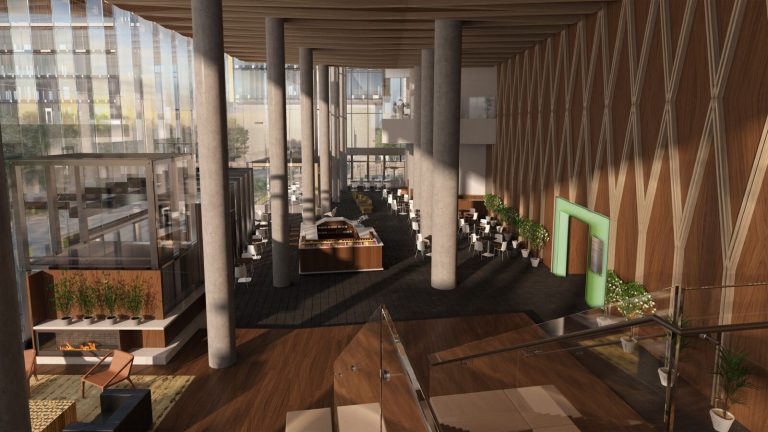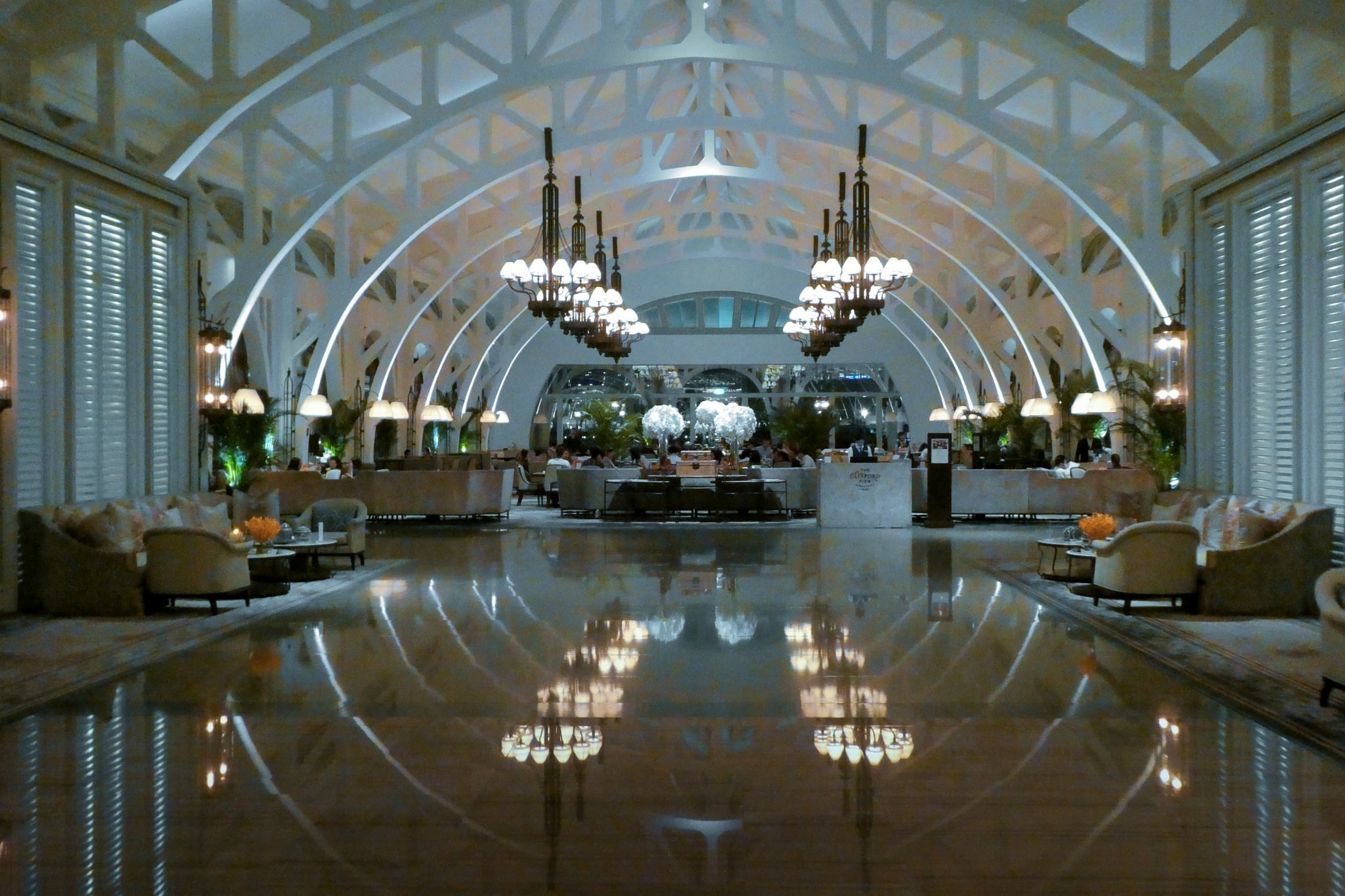Hotel lighting has the power to transform the entire atmosphere of a space. Adopting a strategic approach to hospitality lighting places the focus on ensuring guest enjoyment and creating a memorable brand experience. This can be accomplished by designing a welcoming environment or enhancing the luxurious ambience of common areas. In this blog post, we’ll go through some essential tips and best practices for hotel lighting.
Hospitality Lighting Should be Designed with the Guest in Mind
Guests are the heart and soul of a hotel, and their opinion shapes the reputation of your brand. Prioritizing their comfort and creating an environment that makes them feel at home is vital. It’s important to take a guest-first approach when shaping your lighting design in order to create a positive experience, as lighting can affect their mood, behavior, and perception of the space.
The right lighting design can help guests feel comfortable and at home, providing a memorable stay that will make them want to return. In order to do this, you must first understand the guests’ needs and preferences and design the lighting system accordingly.
Seek to strike a balance between function and aesthetics. The use of layered lighting, incorporating ambient, task, and accent lighting, can help create a visually appealing and functional space that meets the guests’ needs.
Pro tip: A guest-first approach to lighting design can also provide economic benefits for the hotel. By creating a welcoming atmosphere, guests are more likely to spend time in the hotel’s common areas, such as the lobby or lounge, which can lead to increased food and beverage sales.
#1 Hotel Lights Should Emphasize Key Spaces
Certain areas of the hotel require extra attention. These key spaces include the lobby, reception, dining areas, shopping areas, and spas. By highlighting these important areas with unique lighting fixtures, such as chandeliers or pendant lights, guests are more likely to remember the hotel’s aesthetic and overall experience and thus more likely to return or recommend it.
#2 Make a First Impression with Lobby Lighting
Key spaces in a hotel lobby may include areas such as the reception desk, seating areas, artwork, or unique architectural features. Lighting can be used to highlight these areas, drawing guests’ attention and creating a focal point in the space.
For example, using directional spotlights or accent lighting can highlight artwork or sculptures, creating a sense of drama and visual interest. This type of lighting can also be used to add a sense of depth and dimensionality in the space, making it feel more expansive.
#3 Use Dim-to-Warm Lights for Hotel Dining Room

Dim-to-warm lights may prove useful in dining areas as they provide flexibility to adapt the environment to the needs of guests and events. These are fixtures that can change color temperature, allowing for warm or cool lighting to be used depending on the desired ambiance.
In a dining room, warm lighting can create a cozy and intimate atmosphere that encourages guests to relax and enjoy their meals, while cooler lighting can create a more energetic and lively environment for social gatherings or events.
#4 Maintain Continuity Throughout Your Hotel
Maintaining continuity with hotel lighting is important for creating a cohesive experience for guests. Consistent lighting can create a sense of familiarity and comfort, while inconsistent lighting may seem jarring. Continuity involves ensuring that the lighting design flows seamlessly throughout the hotel, creating an intentional look and feel in all areas.
This can be achieved by using similar fixtures, bulbs, and color temperatures throughout the space, creating a harmonious and unified lighting design. Continuity can also help to reinforce the hotel’s branding and style, creating a strong visual identity for the property. This doesn’t mean all lights in the hotel must be the same. It does mean that you should pay attention to how lighting design transitions from one space to another (or from daytime to nighttime) so it is a smooth experience.
#5 Use Flexible Hotel Lighting Fixtures for Event Spaces
Event spaces are typically used for a variety of occasions, from weddings to corporate events to parties. Each type of event may have different lighting requirements. Ensuring your lighting design is flexible and can be adjusted to create different moods and atmospheres can save you a lot of hassle and money in the future.
Selecting fixtures with adjustable settings, such as dimmer switches, color temperature, and beam angle, will allow for greater flexibility. Using a combination of task lighting, accent lighting, and ambient lighting will create a layered lighting scheme that can be adjusted to meet changing needs and preferences.
In addition, flexible lighting can also save your hotel money. Rather than having multiple lighting designs for each event, a flexible lighting system can be adapted to suit a wide range of needs, reducing the need for expensive and time-consuming installations.
#6 Provide Options for Natural Light in Hotels
Natural light is key for creating a welcoming and comfortable environment in your hotel. UCLA Health states that natural light has positive effects on mood and well-being, and can help create a sense of connection to the outdoors. Incorporating natural light into your lighting design can help create an inviting space that enhances the guest experience.

There are several ways to incorporate natural light into your hotel’s design. One option is to incorporate large windows that allow natural light to flood into the space. Floor-to-ceiling windows can create a sense of openness and can also provide stunning views of the surrounding landscape.
Another option is to incorporate skylights or light wells, which can bring natural light into interior spaces that may not have access to windows. Additionally, incorporating light-colored materials in the decor, such as light-colored flooring or walls, can help reflect natural light and make the space feel brighter and more open.
#7 Work with a Hotel Lighting Expert
Working with an expert company can take the stress out of designing your hotel’s lighting system. Lighting designers and architects choose Solais as the source to specify the lighting solutions for hotels. Our team has experts who work with hotel designers and operators to provide lighting designs that enhance the guest experience.
In conclusion, lighting is a crucial element in creating a memorable hotel experience. By prioritizing the guest’s needs, placing emphasis on key spaces, using bi-color lights in dining areas, maintaining continuity throughout, using flexible lighting for event spaces, providing natural light, and working with an expert like Solais, you can find the right fixtures for a hotel lighting design that enhances the guest experience.
